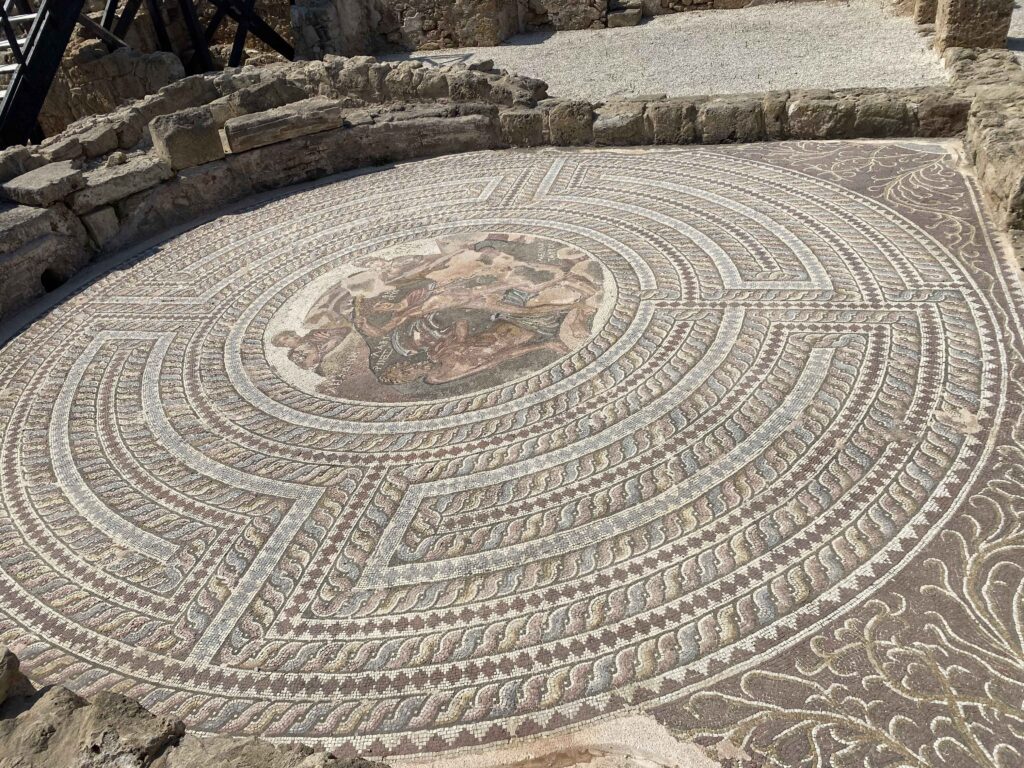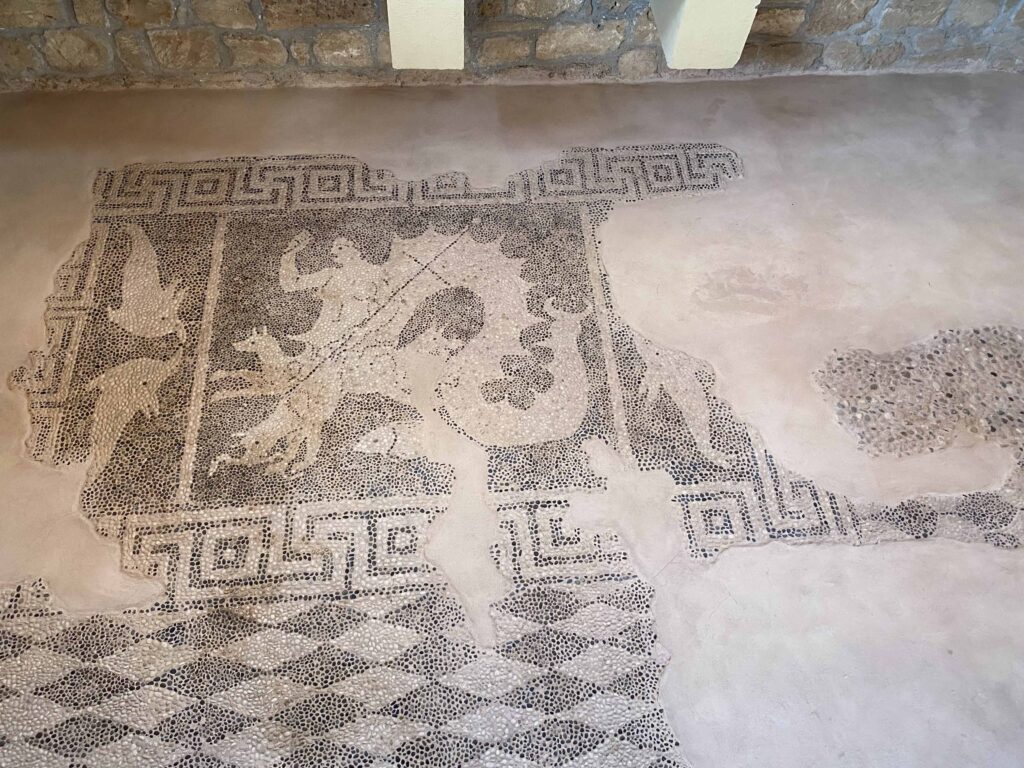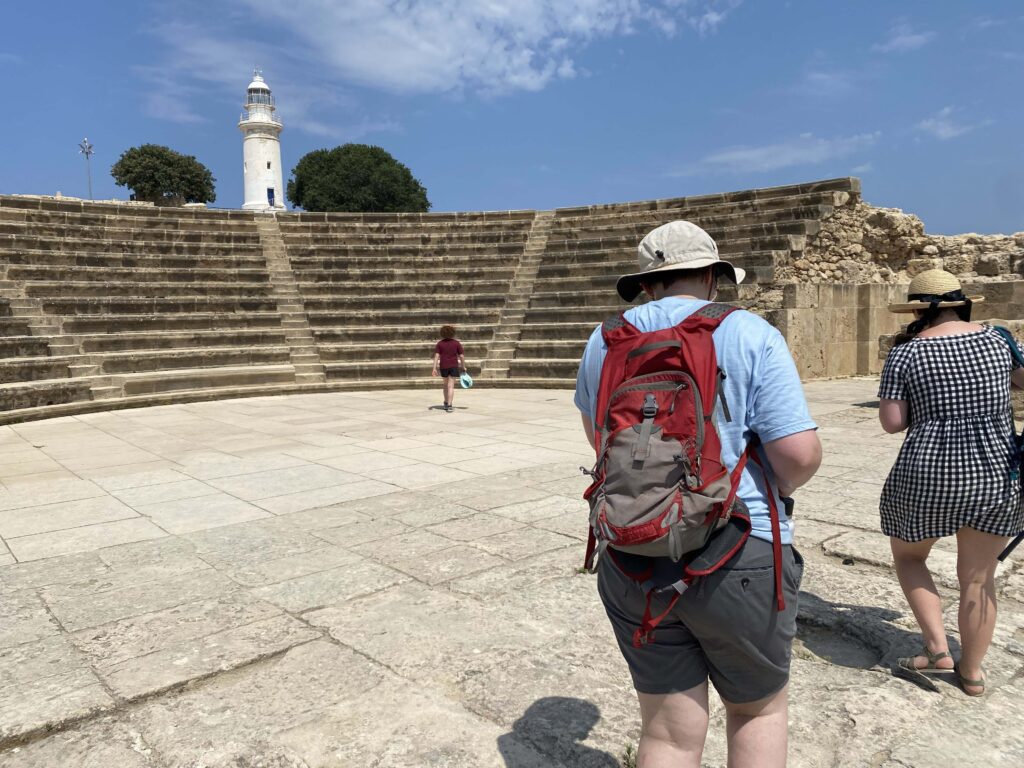Riley Stockton
During our field trip to Paphos earlier this week, we visited the Nea Paphos Archaeological Site and it was an unforgettable place. The site was amazing to see and exhausting to walk through in the sweltering heat! This enormous site was the capital city of Cyprus for a period beginning in the 3rd century BCE, and continued to be when it became a Roman province in the 1st century BCE. Many of the buildings and art that we were able to see were Roman-period villas that contained some of the most beautiful mosaics I have seen.
We first went to the House of Aion, dated to the 3rd-5th c. CE. There was a massive mosaic depicting many different Greek gods and myths. Tom explained that although during this time Christianity was spreading throughout the Roman Empire after Constantine’s rule, the elite continued to showcase Greek mythology in their mosaics as a way of flaunting their high status (as if their huge villas were not enough to hammer this point in).

Next, we walked through the House of Theseus which featured a captivating mosaic of the Theseus myth. I was particularly impressed by the labyrinth from the myth encircling the figures. It is such a clever design to integrate the myth into the stones themselves as a border.

On our way to the House of Dionysus, Tom pointed out an area to another villa that was where the baths would have been, complete with state-of-the-art heated floors (where Mason asked the brilliant question of if they would have had heated baths in the heat of a Mediterranean summer). I found it interesting how such a distinct Roman architectural feature found its way to a villa in Cyprus which I think highlights how there became a standard format for Roman elites to follow in their lives and homes.

Inside the House of Dionysus, we marveled at multiple mosaics. One that stood out was from the Hellenistic period, depicting the monster Scylla. It was fascinating to compare the intricate details and vibrant colors of the Roman mosaics with the simpler, yet equally beautiful, Hellenistic designs. It really highlighted how the art form evolved over time.

We then went to a Roman odeon, where we stumbled upon the spot for a speaker to stand and have their voice amplified. We each took turns standing in the center of a square and as we spoke, we could hear our voices echoing back to us. It was honestly so strange to hear and the acoustics shocked me.

It was cool to see the reach of the Roman Empire in Cyprus and the distinct features of the Romans being present in this city. It makes me wonder more about the extent of imperial authority on the island and how it shaped other features. I will have to look more into that and find out more about the history there.
